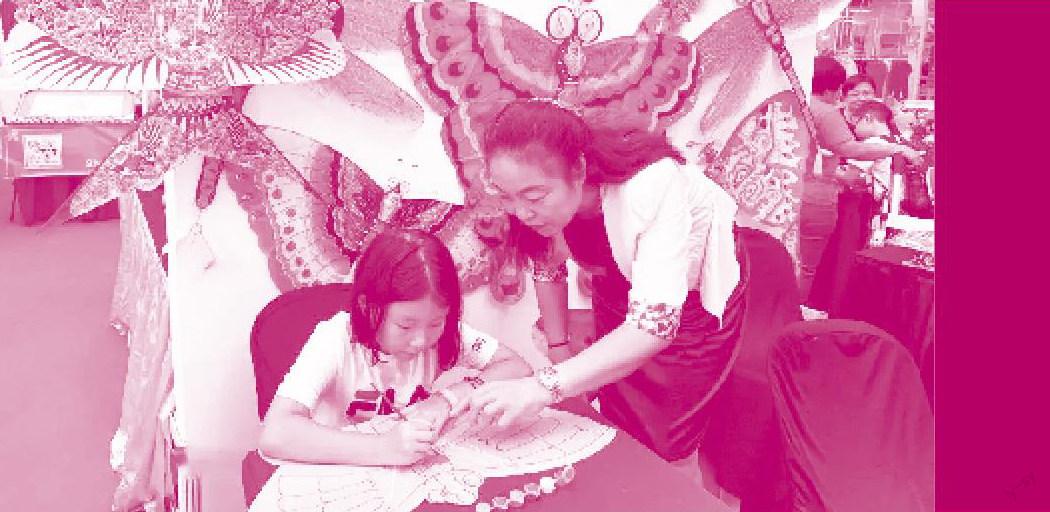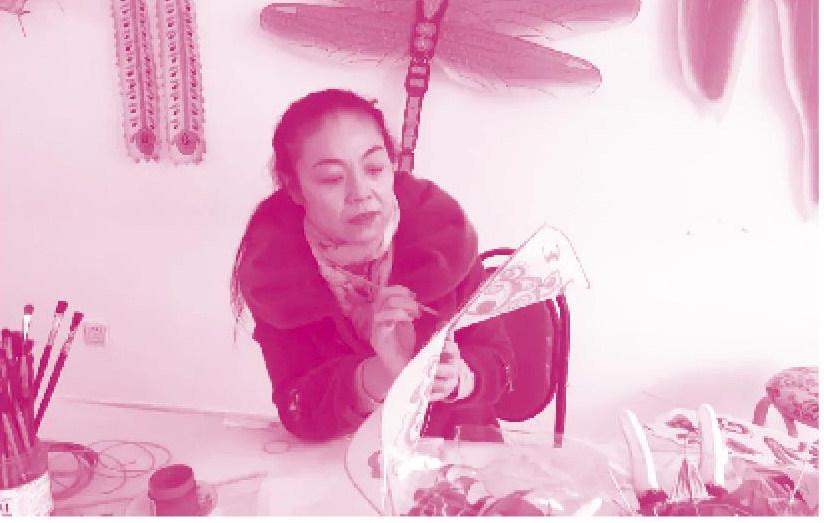She Spread Weifang Kite-Making Around the World她让潍坊的风筝飞向了世界
2022-05-30



Known as the birthplace of kites, Weifang in Shandong Province has a long history of making kites.
According to local artisans, Weifang kite-making can be traced back to 2,000 years ago. At first, they were often used by the military for measuring distance and communication purposes. During the Ming Dynasty (1368—1644), kites started to be popular among ordinary people as entertainment.
Made from bamboo and featuring traditional Chinese paintings, Weifang kite-making was included in the national-level intangible cultural heritage lists in 2006. Initiated in 1984, the International Kite Festival has been held in Weifang every year.
Yang Hongwei, 56, is an inheritor of the Weifang kite-making technique. Born into a kite-making family, Yang often saw kites with bright colors and different shapes in her grandfathers workshop.
“Every time I see these beautiful kites, my boredom and negative feelings go away,” said Yang.
Having a special connection with kites, Yang learned the technique from her grandfather at the age of 16. After practicing the technique for 10 years, she started her own workshop in 1992.
作为风筝的发源地,山东省潍坊市有着悠久的风筝制作历史。
根据当地风筝传承人的说法,潍坊风筝的制作历史可以追溯到2000年前。起初,风筝常由军方用于测量距离和通信等目的。在明朝(1368—1644),放风筝开始作为一种娱乐方式,在普通百姓中流行起来。
潍坊风筝以竹子为原料,以中国画为特色。2006年,潍坊风筝被列入国家级非物质文化遗产名录。国际风筝节创办于1984年,每年都在潍坊举办。
56岁的杨红卫是潍坊风筝技艺传承人。杨红卫出生在一个风筝世家,在祖父的作坊里,她经常看到色彩鲜艳、形状各异的风筝。
杨红卫说:“每当我看到这些美丽的风筝,就不觉得无聊了,负面情绪也消失了。”
杨红卫和风筝有着特殊的渊源,16岁时,她从祖父那里学会风筝制作技艺。经过10年的创作实践,杨红卫于1992年成立了自己的作坊。
“Many places around the world have a tradition of flying kites,” Yang said. “But I think the cultural context behind our kites is unique.”
On Yangs kites, people can see not only common patterns like butterflies and swallows, but also some prints telling Chinese myths, legends and history. For example, she once made a kite showing a phoenix head lined with portraits of 50 famous women in Chinese history on each side.
Though the idea was cool, the process was not easy.
Yang said that each woman has different characteristics in look, attire and make-up style. To create their portraits, she spent much effort and time checking historical records or discussing the details with professionals.
“Its time-consuming,” Yang added, “but when I explain the stories on the kites to foreign customers, I feel a sense of great achievement.”
In her spare time, she also travels to different countries including Germany, Australia, the US and New Zealand to tell people about Chinese stories seen on kites and the traditional ways of making kites.
“Im an inheritor of the culture. It is also an important job of mine to spread the heritage around the world and onto the next generation,” she said.
“世界上很多地方都有放風筝的传统。”杨红卫说,“但我认为我们风筝背后的文化背景是独一无二的。”
在杨红卫的风筝上,人们不仅可以看到蝴蝶和燕子等常见的图案,还可以看到讲述中国神话、传说和历史的图案。例如,杨红卫曾经制作过一个绘有凤凰头的风筝,两边分别画着中国历史上50位著名女性的肖像。
虽然这个创意很酷,但制作过程并不容易。
杨红卫说,每位女性在外表、服装和妆容风格上都各具特色。为了创作她们的肖像,杨红卫花费了大量的精力和时间,去查阅历史记录或与专业人士讨论细节。
“这非常耗费时间。”杨红卫补充说,“但我向外国客人解释风筝上的故事时,有一种很强的成就感。”
在业余时间,杨红卫也去往包括德国、澳大利亚、美国和新西兰等不同的国家,她会给人们讲述风筝上所绘的中国故事,教授制作风筝的传统方法。
“我是潍坊风筝技艺的传承人,我的一项重要工作就是将这项文化遗产传播到世界各地,传递给下一代。”她说。
Word Bank
artisan /'ɑ?t?'z?n/ n. 工匠;手艺人
initiate /?'n??ie?t/ v. 发起;开始
They wanted to initiate a discussion on environment.
inheritor /?n'her?t?/ n. 继承者
attire /?'ta??/ n. 服装;衣服
